
Debuting in 2008 as the first peripheral artist to feature on Deadmau5’s mau5trap label, Jon Gooch (aka Feed Me) exploded onto Beatport with his unique brand of bass-heavy electronica before creating his own Sotto Voce label to garner full creative control. As a former multimedia designer, Gooch has become synonymous with his green Feed Me monster character, infusing its fictitious narrative into his music and infamous ‘With Teeth’ live productions.
Alongside his drum & bass stage name, Spor, Gooch is known for his eclecticism and cutting-edge approach to sound design. On his latest, self-titled, Feed Me album, the producer decided to switch up his creative process. Alternating between his live instrumentation and programming skills, the record showcases Gooch’s audacious production skills and high-octane brand of anthemic bass and electro.
You’ve mentioned how you differentiate between EPs and albums, comparing them to magazines and novels. How does the latest Feed Me album play into that?
“I grew up listening to prog-rock albums that had distinct story arcs and weren’t exposed to pop music until I was a bit older so, to me, an album was something you’d put on and listen to in its entirety. I like the idea of an album is a journey and try to consider a screenplay element when I’m writing. There’s been an aesthetic to each one and I started to Feed Me as a figurative idea, with the character not referencing food but being consumptive.”
So there’s an ideological component to the Feed Me character?
This story is from the Autumn 2021 edition of Future Music.
Start your 7-day Magzter GOLD free trial to access thousands of curated premium stories, and 9,000+ magazines and newspapers.
Already a subscriber ? Sign In
This story is from the Autumn 2021 edition of Future Music.
Start your 7-day Magzter GOLD free trial to access thousands of curated premium stories, and 9,000+ magazines and newspapers.
Already a subscriber? Sign In
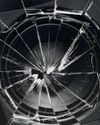
SONIC DESTRUCTION
From overdriven signal paths to rhythmic malfunctions, there’s plenty of creativity to be found by doing things just a little bit wrong

Feed Me
EDM producer Jon Gooch revives his cartoonish Feed Me moniker. Danny Turner finds out how the use of live instrumentation changed his production approach
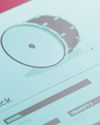
Exploring Akai MPC
Leo Maymind takes a detailed look at an iconic groovebox whose influence helped shape modern hip-hop and much more besides
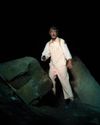
Liars
Dissolving the contours of rock and electronics, Danny Turner charts the making of Liars’ 10th album with Angus Andrew and Laurence Pike

Jean-Michel Jarre
The pioneering musician who introduced generations to futuristic sounds the first time around is at it again. He joins Matt Mullen to talk experiments in VR gigging, spatial audio and more...
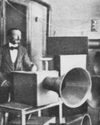
Noise
With roots as far back as 1913, noise is the genre that’s also a state of mind
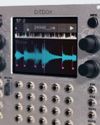
1010 Music Bitbox mk2 £549
Rob Redman finds out whether this updated sampler box of tricks contains any more surprises
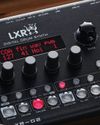
Erica Synths and Sonic Potions LXR-02 £499
Rob Redman braces himself for another resurrected blast from the past
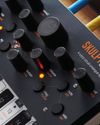
Modal SKULPTsynth SE £169
Modal are back with an update to their SKULPT synth. Bruce Aisher takes a listen to see if it can rustle up a big sound
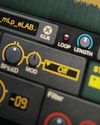
Reason Studios Reason 12 £399
Now in both DAW and plugin realms, Reason gains a sampler and refreshed Combinator. Si Truss investigates